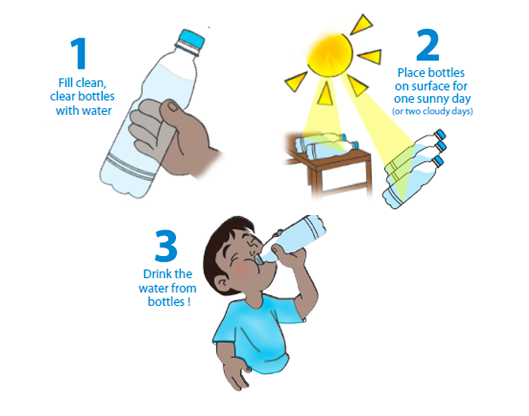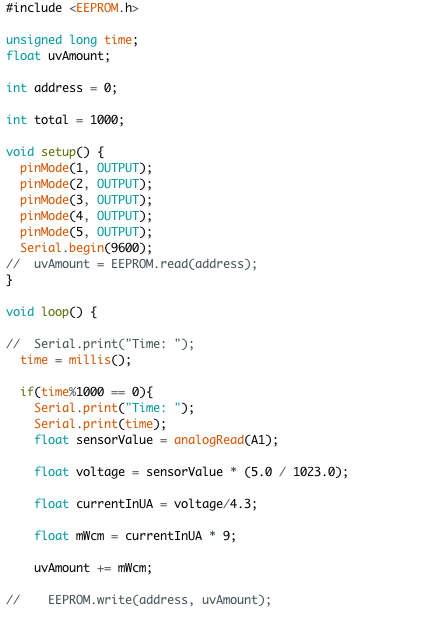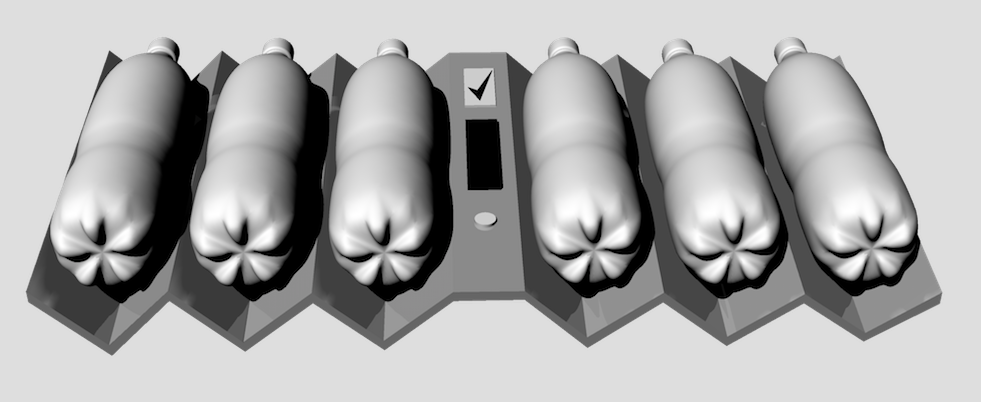Joakim and I set out to build something useful for our final Energy project. We didn’t want to simply bring awareness to an issue or create an interesting piece of artwork connected to Energy. We wanted to help people. This is what led to H2OK.
WHAT IS IT?
H2OK is a water filtration system designed to create safe, drinkable water. Our system is portable, cost effective and simple to used. And it can be implemented domestically in places like Flint, Michigan, during emergency situations where clean water is suddenly scarce and in parts of the world who have no consistent access to clean water.
INSPIRATION
Our initial inspiration for the project was the Gravity Light. Their mission is to eliminate kerosene lamps and their damaging effects. We loved the idea of creating something simple and durable that could truly change people’s lives. Our first thought after reading about the Gravity Light was to build on their initial idea. What if we could use water as the kinetic energy needed to create the light?  And what if the water could be filtered during the process and provide both light and clean water all at once?
And what if the water could be filtered during the process and provide both light and clean water all at once?
As we did research, we realized clean water was even more important than light for most of the world. It can spell life or death for people. And kinetic energy was not the best way to clean the water. The more research we did, the more Joakim and I decided we’d prefer to build a water filtration system on its own without the light. Although we felt smarter people had attempted it and there was more than one product in existence, many parts of the world were still lacking. And what if we could come up with something better? If we could just help a few people with our project, it would all be worth it.
THE SODIS METHOD
This is the method recommended by the World Health Organization, UNICEF and the Red Cross. After many hours spent researching different types of water filtration, this process was the easiest to implement and since it is approved by many of the world leaders in outreach programs, the SODIS method was the natural choice.
SODIS stands for “Solar water disinfection.” It is one of the most effective ways to filter water and prevents diarrhea, one of the most common causes of death among people in the developing world. Simply leave water in the sun until it is clean enough to drink. Here’s a little graphic to better explain how it works:
But how long would it take? And how would a user know when the time is up?
Some days are sunnier than others. The length of time it would take would vary greatly based on location, season and day to day weather. We needed to build in a way to give feedback — let the user know when the water is ready to drink. One sunny day or two cloudy days is not precise enough when peoples’ lives are at stake.
WHEN IS THE WATER READY TO DRINK?
First of all, what type of radiation is necessary? We would need a sensor to test for the UV radiation, but there are many forms, UV-A, UV-B and UV-C amongst others. Different sensors measure different types and we needed to measure the correct type.
After a bit more research, we learned UV-A radiation was the type required so we set off in search of the perfect UV-A sensor. We found this one at Adafruit and after tests it turned out to be a great option:
Analog UV Light Sensor Breakout – GUVA – S12SD
But how much UV-A radiation was necessary to clean the water. As we did more reading, we learned it was different amounts for different things. Here’s a great chart to reveal some of the culprits and the amount of UV radiation to eradicate it:
Over the course of our research, we discovered that water needs a minimum of 16,000 uWatts/cm^2. This is the number we used as we proceeded further with our design.
HOW DO WE BUILD THE CIRCUIT?
The circuitry needed to be figured out before building it for real use. We decided to start with an arduino powered by the computer to make it easier to sort out the code.
We needed to take measurements of UV-Radiation over time and find a way to save each amount and add it to the previous number to know when we would finally reach the 16,000 uWatts/cm^2 amount needed to declare the water safe to drink. We achieved this goal with the arduino, the UV sensor and the code below:
We learned that if we write the amount to the Aruino directly, it can only save 100,000 times before rendered useless. This is a limit of the Arduino. The line commented off in the code above is the “save” line. This would not be viable in the final product, but we learned how to do it for now.
HOW TO REVEAL FEEDBACK?
Before the actual build which requires contemplating mass production and cost, we decided to do a small version to present in class as a proof of concept. Instead of forcing the class to sit through approximately six hours of staring at bottles in sunlight, we put together a small circuit with five LEDs and five 220 ohm resistors in addition to the UV sensor. Each diode lights up after a small UV-A marker is reached to prove the method we’re using to keep track of the UV-A sensor’s readings.
We only needed to alter the code slightly to bring this to fruition. Here it is below:
THE FINAL BUILD
Although we have not made a prototype yet of our final product, we have spent quite a bit of time researching how to do it so it has the highest usability, the most durability and the lowest price point.
The first change is removing the arduino from the equation. In order to make the product as affordable and light as possible, the arduino will eventually be replaced with a micro controller with an attached piece for non-volatile memory storage. Here’s a quick way to understand non-volatile memory as quoted from Wikipedia ” Non-volatile memory is a type of computer memory that can retrieve stored information even after having been power cycled (turned off and back on).” This will allow the results to be recorded and saved over and over again regardless of a power source.
The reason we need non-volatile energy is because we want to use photovoltaics to power the system. Since the water is only cleaned when UV-A radiation is present, a lack of sun some of the time is not a problem — no sun means no cleaning of the water so the timing aspect can power down during shady periods. The only hiccup in this system is making sure the amount cleaned is saved safely during the shady periods and can be accessed once sunlight and power are introduced back into the system. This is why non-volatile memory storage is crucial. Using solar energy to power the system makes it more cost effective because no battery is needed. It also makes the system reusable indefinitely.
The second issue is the feedback system. We need power to show the feedback, but if we lose light, the circuit will have no power. An LED or similar feedback will not work without power and mechanical readouts can break over time. We decided eInk would be the best, most effective method.
It requires power to do the initial read out, but it can remain in the “finished” position even after the power has been cut — this is why Kindles are so energy efficient. Instead of a word as feedback, since we wanted the product to be used wherever needed and not everyone is fluent in English, we decided to use a visual — a checkmark. When the water is safe to drink, a checkmark will appear on the screen.
The third addition is how to reset the system. A simple button we felt would be the easiest. Once the H2OK is placed in the sun, the button can be pressed, reseting the system and causing the eInk checkmark to disappear. This also resets the counter in the circuit, starting the system over once more.
The final part of the design was based on usability. The bottles are required to be PET, but can easily be the type we drink out of. The water is more quickly and throughly cleaned when laid against reflective material. Instead of building a box container like we initially envisioned as seen below:
We decided that we should construct it out of material like a reflector for a car windshield.
This is reflective for the sunlight, easily folds up which makes it portable and very light weight. We felt the center could be firmer — the only part requiring the UV sensor, the Photovoltaic cell, the rest of the circuit, the readout and the button. The rest can easily fold in beneath this center aisle. It makes transportation and storage simple and easy.
Here is the final design concept for H2OK:
















